How & When To Plant Poppy Seeds: 5 Simple Steps
-
Pete Ortiz
- Last updated:
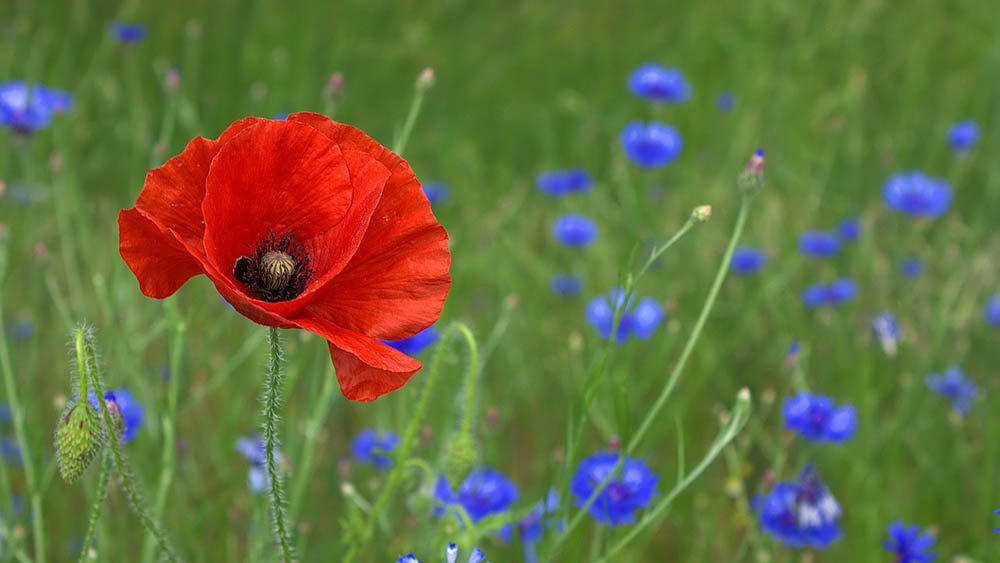
The bright red flowers of poppies are a symbol of shed blood and the fire of love. Due to its narcotic effects, the poppy has been associated with sorcery and mysterious forces in the past. Still, people learn to appreciate this plant’s healing and soothing features.
The most notable species of poppy are field and garden, or opium poppies. The poppy is an annual plant with an herbaceous, erect stem that can grow up to about 40 inches but is easily breakable. The plant looks smooth and grayish-green in color. The flowers are 1.2 inches to 4 inches in diameter, usually with four white, burgundy, or red petals, sometimes with dark spots on the bottom, while the fruit resembles a rounded capsule.
If you are interested to learn how or when to plant a poppy seed to watch it grow healthy and strong, this article has a few helpful tips and tricks.
Before You Begin
Proper soil preparation is crucial when growing any plant because otherwise, your poppy plant may not sprout. Poppy grows best in rich soil, so you may need to add fertilizer if you plan to grow it in poor soil. It is best to prepare the soil by removing weeds, and the soil should be slightly watered, if possible, with a sprayer so that it does not get too wet and remains loose.
Well-structured and deep soil with a favorable water/air ratio is suitable for planting and growing poppies, such as sandy-clay soil. The pH value of soil that’s optimal for poppy cultivation is 6.5 to 7.2. It is best to plant poppy on land where crops such as legumes, cereals, or potatoes have been previously grown. After sowing these pre-crops, the soil should be well plowed and thinned.
The 5 Steps on How to Plant Poppy Seeds
Growing poppies from seed is a relatively simple process. The seeds are planted directly in the ground on slightly moistened soil, so the wind does not blow them away. It is necessary to choose a suitable place for growing, preferably with enough sun exposure.
1. Placement
For sowing, it is best to use seeds taken from large and healthy flowers collected in the field. Before sowing, you should treat the poppy with insecticides and fungicides that are made for that purpose. It is recommended to plant it in early spring, after frost, to achieve the best results. When growing poppies in the garden, the seeds should be laid only on the ground without covering the ground, and the distance between the seeds should be about 8 inches.
Poppy can also be grown in pots, and it should be kept in sunny places and protected from strong winds. Poppies are rarely planted in pots because they grow much better outdoors and in the garden. You could say that growing poppies indoors is only for those who like a challenge! Perennial species need a dormancy cycle provided by the seasons, which the indoor space cannot fully provide. If you grow poppies indoors, use small peat pots and add more seeds to increase the seeds’ likelihood of germinating.
2. Soil
Poppies will grow in most soils, but you could plant them in well-drained soil and with excellent sun exposure for best results. A mixture of peat, sand, and bark is suitable for growing poppy seeds.
One way to check if soil drainage will suit your poppy seeds is to dig holes, fill them with water, allow them to dry completely, and then add water a second time. If the soil takes more than 4 hours to absorb water, it is advisable to look for another place to plant poppy seeds.
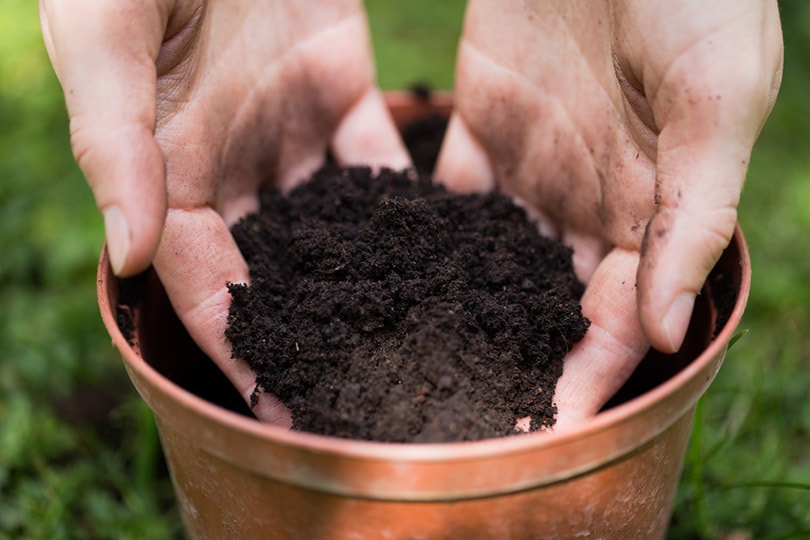
3. Water properly
It is best to use a sprinkler for watering, and it is not desirable to water from a hose. Poppy plants can rot in soaked soil, so water only when the soil is dry. Usually, poppies should be watered only once every few days. Increase the amount of water during watering on the hottest days or if the poppy turns brown. Avoid watering the plants during the early afternoon, especially in sunny weather. The heated water can damage the leaves and evaporate before the plant absorbs it.
4. Harvesting the poppy seeds
The harvest usually occurs 80 to 90 days after planting and the poppy usually blooms in early summer. After the delicate petals begin to fall off, a cocoon that contains hundreds of tiny black edible seeds develops. You can check if the pods are ripe by shaking the stem. If the shells rattle, it is a good indicator that it is time to harvest.
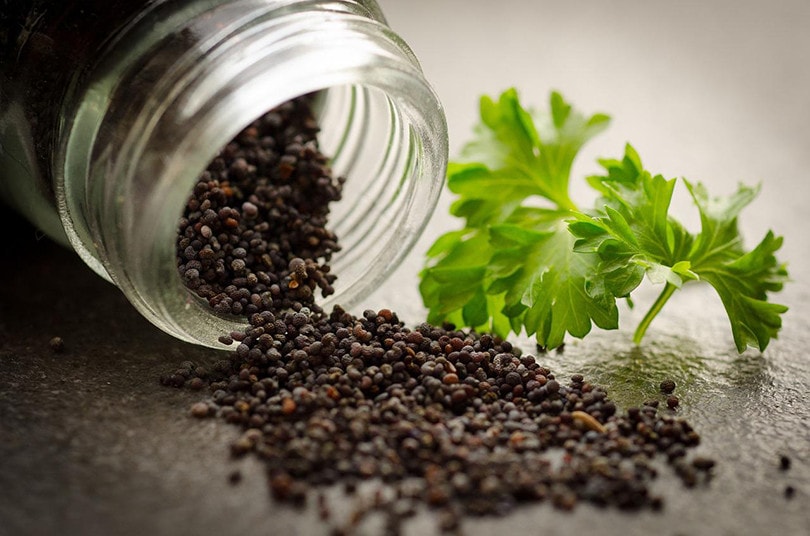
5. Drying and storing
To store the seeds for the next season, dry them for a few weeks in an open pot. Then place the seeds in a glass jar with a lid. Delicious seeds will retain their taste for up to a year if you store the glass container in a cool, dry, and dark place.
 When to Plant Poppy Seeds
When to Plant Poppy Seeds
Poppy is sown in spring, early summer, or autumn in a place particularly designated for it. It is necessary to emphasize that you must sow the poppy directly where it will grow and bear fruit because it does not tolerate any disturbance of the roots, which could occur during transplanting. It is recommended to plant it in early spring, after frost, to achieve the best results. Oil poppy is sown in early spring, at the beginning of April at the latest.
Poppy must be grown in crop rotation to reduce the risk of various diseases but also the appearance of pests. It is sensitive in the germination phase, so you should plant it in moist, not dry soil.
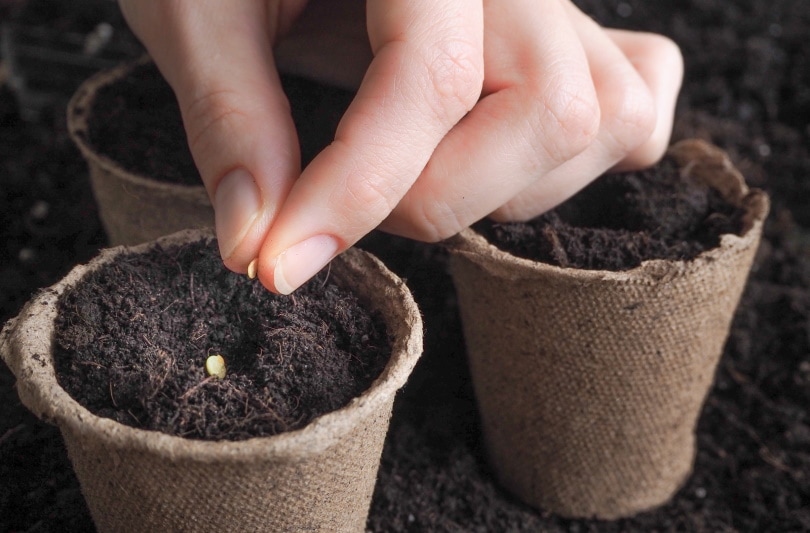
Poppy Seed’s Common Uses
Poppy seeds are quite a popular spice and food additive around the world. Poppy seeds contain small amounts of morphine and codeine, which are painkillers still used today.
Poppy in Cooking
Poppy seeds have been used in cooking since ancient times. They can serve as ground or whole, and they can go in both salty and sweet dishes. The nutritional value of poppy is exceptionally high, and it is rich in many valuable nutrients that are good for digestion, such as:
- magnesium
- zinc
- phosphorus
- copper
- calcium
- manganese
- vitamin B
- unsaturated fatty acids
- fiber
The taste of poppy seeds is moderately sweet with a specific spicy note, and people especially like to put it in sweet dishes because it contributes to crunchiness. Italians often use it in gnocchi and pasta toppings, while Americans adore it as a sprinkle on famous bagel cakes and lemon muffins.
Poppy in Medicine
The poppy plant has many beneficial and incredible uses in medicine as well. It is used widely in the pharmaceutical industry. The poppy plant is distinctive for its pain-relieving properties, so if you suffer from joint pain and swelling, apply a paste made from poppy seeds to the affected area to relieve pain. Poppy plants contain morphine, thebaine, codeine, and opium alkaloids, which give this plant a calming effect.
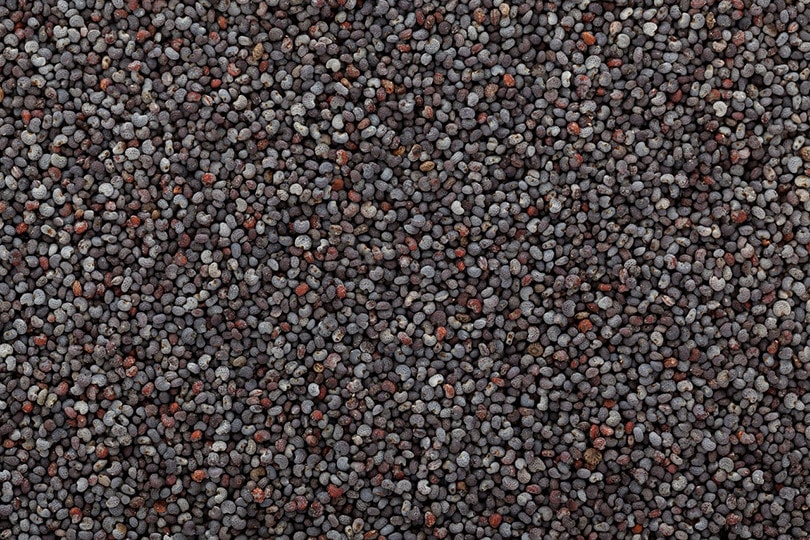
Dealing With Pests and Diseases
Poppy plants do not have to deal with unwanted pests and diseases that often. Aphids are a very common occurrence before the poppy plant blooms but can be eradicated easily with insecticidal soap and by removing the aphids with water. Snails and slugs are also a common issue with early plants. Avoid wet or moist areas to ensure your plant stays healthy and doesn’t become infected with fungal disease.
If not appropriately maintained, the poppy plant can become infested with powdery mold, and by the time you discover your plant is infested, it will be too late to treat it. Most diseases of a poppy plant can be prevented by carefully watering the plant, providing it with enough room and space to grow, and adequate air circulation.
 Conclusion
Conclusion
Poppy is often grown in gardens because of its attractive appearance. Nevertheless, it is also used for many other purposes—used widely in various cultures’ kitchens and has significant medical uses too. If you decide on planting poppy seeds in your garden, make sure to follow our tips and you will surely grow a strong and healthy poppy plant!
Featured Image Credit: PeterDargatz, Pixabay
Contents


